- Opinion
- Posted
Heritage and Development

We are all tediously familiar with the story. Heritage holds up development or heritage is destroyed because of development. It seems to be an almost constant news item in this country. The current unprecedented level of economic activity has transformed the country, whilst at the same time there are more safeguards for heritage in terms of legislation and conservation groups. When the two worlds of heritage and development collide opinions frequently become polarised and fraught with difficulty. There are few more vexed issues, as Tim Carey, Heritage Officer with Dun Laoghaire Rathdown County Council reveals
Sustainability on one level is about wider environmental sustainability relating to resources, energy and materials. But sustainability is also about retaining aspects of the world we have inherited, as custodians, for future generations. It sounds glibly simplistic. Indeed it is, as the reality is far more complex.
While much attention in this country has focused on heritage and infrastructure development it is in the far more numerous smaller residential and commercial schemes, which are closer to our day-to-day lives and experiences, that have a larger incremental effect - something akin to death by a thousand cuts.
As a nation we are very fond of being the best or the worst at something. In soccer we have the best supporters in the world, in literature we produce per capita probably the finest list of writers of any country. Conversely we are rip off Ireland, we have the highest house prices in Europe and the M50 toll bridge is the most idiotic traffic jam in Europe. In terms of the protection of our heritage we are very hard on ourselves.
Perspective is as important in relation to heritage as it is in other areas of life. However, perspective is something that we lack on our island and it is as well to remind ourselves at times that we are not as bad as we think we are. While we of course have our own particular difficulties there are horrendous examples in all countries.
On a recent holiday in the Marche region of Italy we passed through, on a daily basis, the largest Roman settlement in the region - which is saying something - at Urbisaglia. Dating from the first century BC the complex includes the substantial remains of the theatre and amphitheatre. Oh, and also a petrol station.
The Loire Valley is the patrimonial heartland of France from which springs for many French people their sense of national identity. Sitting in the back garden of our rented gite we looked over the well-tended fields to the sixteenth century fairy tale castle of Ussé which provided the inspiration for the fairy tale Sleeping Beauty. It was an idyllic scene the illusion of which was more than somewhat shattered when the warning siren went off in the Chinon nuclear power plant 6 miles away (after some minutes of sipping our coffee nervously we concluded from the lack of panic in the area that it was a drill). The hue from its huge plume of vapour became even more ominous than normal.

Or, in Barcelona , Casa Battlo. Antonio Gaudi's Hansel and Grettle-esque masterpiece is abutted at the rear by what can only be described as a piece of urban cultural brutalism erected presumably during the Franco era as a snub to Catalan sensitivities. Or what about the state of large stretches of Roman wall in London which makes our own city wall of Dublin seem positively resplendent in places.
Dealing with heritage and development in a mature way is not easy. Of course there are times when it is a case of either/or. On some occasions it is heritage that is given precedence. To take perhaps extreme examples it would not be acceptable to build apartments on the Wexford Slobs or to demolish the burial chamber at Newgrange for a Lidl. In others it is development that gains - archaeology will be excavated and trees felled to make way for houses. The most important sites are afforded protection under various pieces of legislation including the National Monuments Acts, the Planning Acts, the EU Birds and Habitats Directives and the Wildlife Act.
However, rarely is it an absolute case of either/or. This is the grey area in which most residential and commercial development takes place. How can development and heritage be compatible? One of the basic ways of trying to ensure that this does happen is to actually put heritage on your mental map when you first start to run with an idea of a development. Very rarely can heritage be adequately accommodated as an afterthought. Heritage needs to be incorporated at the planning and design stage whether this be in a local area plan, the first draft design for a new building in an architecturally sensitive area or doing a habitat survey of a site to be developed.
Archaeology often provides the most difficult of problems due to the fact that very often the very existence of an archaeological site may not be known until ground is broken. While we have our own examples - imagine the scene in London when excavations were taking place for the Guild Hall gallery in the City and they discovered the Roman amphitheatre. It must have been an interesting moment replete with choice expletives. That they did not know where the Roman amphitheatre was is surprising but it does put into context some of our own recent discoveries.
In architecture a quick fix solution, or lazy approach, is to put up a pastiche building which imitates the more historic buildings in its immediate environment. However, this often mocks the original structures by being merely cheap and nasty imitations. At the same time it is somewhat dispiriting isn't it? Each generation should be allowed or have the philosophical confidence to put its own vision forward. One difficulty is that it can be difficult for people to pinpoint the reasons for liking or not liking something. How many lay people could discuss the particular merits of any building with precision? Often people fall back on the prejudicial position against anything that looks modern - the woeful standard of much of the building of the 60s 70s and 80s is perhaps largely to blame for this.

An often over-looked alternative is for the existing building to re-used. A recent Dublin City Council survey indicates that not only does the re-use of buildings assist in retaining character and is environmentally sustainable but is also cost effective. In England the extremely successful property development firm Urban Splash has redeveloped some amazing structures with local authorities but on a sound economic footing. Some of their buildings include the daunting scale of the Lister Mills in Bradford and the challenging economic environment around the Midland Hotel in Morecambe.
In some ways the issue of ecological landscape design has begun to take root. In Ireland we are at an early stage with biodiversity plans in various stages of progression in a number of local authorities with many going someway down the road of addressing biodiversity and planning. However, there is no doubt that ecological issues can be very emotive. Take for example the felling of trees on the main urban thoroughfare in Ireland at O'Connell Street .
The heritage equation is not all one sided. On the other side there is the question of providing for our own heritage of the future. Each generation should be entitled to make their own mark. But very often there is a negative reaction to anything new. It is interesting to speculate if today we would object to the construction of some things that we now cherish? Taking some examples from my own area (there are hundreds, if not thousands, of examples like these throughout Ireland) - would we get away with putting up the Lead Mines chimney on a hill outside Bray, would we get away with building houses on Sorrento Terrace, or a railway along a pristine section of coastline in south Dublin? These are pertinent questions and those who object to all new development should reflect on them.
However, at the same time this argument is used by some to mask often-poor quality design that we have to endure on a daily basis. Their argument can be a vacuous one when confronted with the reality of what they are building. However, often it is an argument that has merit. Just because something is new does not mean it does not have merit. Things, alas, are rarely clear-cut in heritage.
One problem is that heritage is given a bad name by people who use it as a weapon. These people will find, indeed intensively seek out, a heritage issue to support their objection to a particular development because of reasons that do not relate to that heritage - for example it will block their view or increase traffic on their road. Those who promote development then see heritage as a crank subject. Using heritage as a weapon like this rarely advances the cause of that heritage.
Another pitfall for heritage are those people who give all heritage a 100% value by arguing against anything new on the ground that it will impact on heritage full stop. Effectively this is the same as giving it all a 0% value. Without addressing the relative importance of each aspect of heritage - be it architectural, archaeological or natural heritage - there can be no way of making a value judgement. On the other hand developers can mercilessly exploit the commercial value of heritage while at the same time undermining its very existence.
There is no doubt that heritage and development is an issue that is going to continue to feature as Ireland continues its rate of economic development. The beginning of the conservation movement in Ireland has been traced back to the Wood Quay controversy of the late 1970s. We have come a long way since then. However, we are far from dealing with the issue in a mature way. Too often it is confrontational and either/or. I would suggest that what we need to do is to concentrate on policies, projects and practice beyond either/or.
The Conference Planning and Design for Heritage and Development: Projects, Policies and Practice Beyond Either/Or, is being held at Killiney Castle, October 18 and 19, 2005, a Dún Laoghaire-Rathdown County Council and Heritage Council Event. For more information see www.dlrcoco.ie/heritage/conference.pdf or email This email address is being protected from spambots. You need JavaScript enabled to view it.
- sustainability
- heritage
- development
- Planning
- architecture
- tim carey
- dun laoghaire
- rathdown
- county council
Related items
-
 Reimagining the architect
Reimagining the architect -
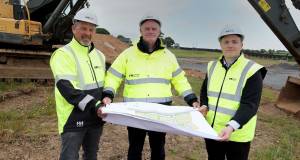 £30m passive scheme launched in Down
£30m passive scheme launched in Down -
 Medite Smartply makes TU Dublin green building donation
Medite Smartply makes TU Dublin green building donation -
 Dulux Decorator Centre launches carbon reduction plan
Dulux Decorator Centre launches carbon reduction plan -
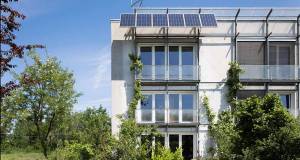 International passive house conference kicks off
International passive house conference kicks off -
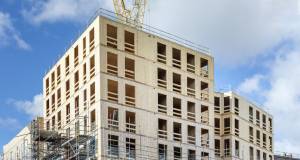 Towards greener homes — the role of green finance
Towards greener homes — the role of green finance -
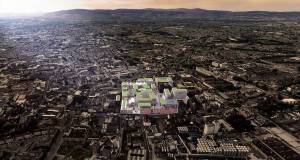 Ballymore to deliver mooted zero carbon Guinness Quarter
Ballymore to deliver mooted zero carbon Guinness Quarter -
 RIBA calls for more post occupancy evaluation
RIBA calls for more post occupancy evaluation -
 EPA announces €600,000 circular economy innovation fund
EPA announces €600,000 circular economy innovation fund -
 SEAI Energy Awards 2020 open for entries
SEAI Energy Awards 2020 open for entries -
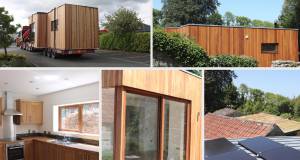 Lidan complete ecological NZEB rapid build for DLR
Lidan complete ecological NZEB rapid build for DLR -
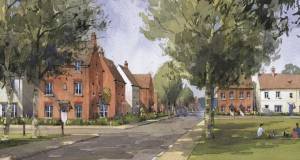 More UK councils adopt passive house standard
More UK councils adopt passive house standard

